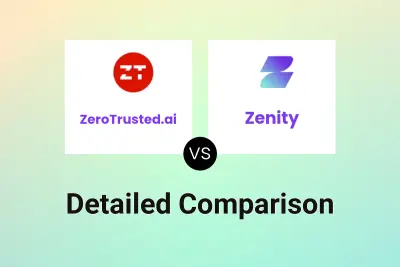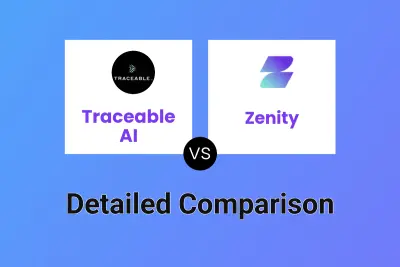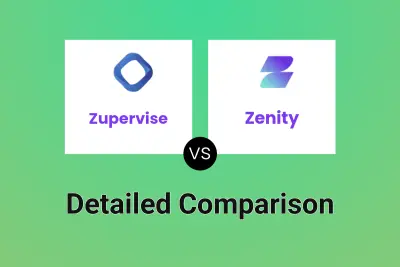 Zupervise
vs
Zupervise
vs
 Zenity
Zenity
Zupervise
Zupervise stands at the forefront of AI governance as a sophisticated risk transparency platform designed to address the complex challenges of AI implementation in regulated enterprises. The platform offers a comprehensive suite of tools for monitoring AI risks, maintaining compliance, and ensuring responsible AI development.
Through its integrated approach, Zupervise enables organizations to analyze risks across multiple layers of AI, including models, training data, inputs, and outputs. The platform features a pre-built taxonomy of AI risks, automated monitoring capabilities, and robust governance frameworks that help businesses maintain transparency while scaling their AI operations.
Zenity
Zenity offers an agent-less SaaS platform specifically designed to secure AI agents from buildtime to runtime. The platform provides comprehensive visibility and control over AI behavior, addressing critical security challenges in enterprise environments where AI agents are increasingly connected to corporate data and business applications.
The platform excels at detecting and responding to various threats including prompt injection attacks, least privilege violations, and hidden instructions while implementing AI Security Posture Management (AISPM) controls. Notable achievements include helping organizations remediate 90% of vulnerabilities within four months and achieving an 80% risk reduction across large-scale enterprise deployments.
Zupervise
Pricing
Zenity
Pricing
Zupervise
Features
- AI Controls Repository: Pre-built taxonomy and internal controls libraries for risk management
- Risk Observability Dashboard: Single pane of glass for cross-team collaboration
- Outcomes Interpretability: Integrated explainability for machine-learning risk provenance
- Multi-layer Risk Analysis: Comprehensive assessment across models, data, inputs, and outputs
- Regulatory Compliance Tools: On-demand reporting and documentation capabilities
Zenity
Features
- AI Agent Profiling: Observes and profiles all AI agents across the enterprise
- Threat Detection: Identifies direct and indirect prompt injection attacks, least privilege violations
- Runtime Security: Implements comprehensive runtime inspection and protection
- Compliance Management: Monitors and controls sensitive data access and sharing
- Business Continuity Controls: Manages unattended AI agents and prevents disruptions
Zupervise
Use cases
- AI regulatory compliance monitoring
- Cybersecurity risk assessment for AI systems
- Privacy protection in automated decision-making
- Third-party AI vendor evaluation
- ESG compliance for AI implementations
- AI governance and transparency reporting
Zenity
Use cases
- Enterprise AI security management
- Compliance monitoring for AI systems
- Business continuity protection
- Security posture management
- Risk assessment and mitigation
- Data leak prevention
Zupervise
FAQs
-
What types of AI risks does Zupervise monitor?
Zupervise monitors various types of AI risks including regulatory compliance, cybersecurity, privacy, third-party risks, conduct risks, and ESG-related risks.How does Zupervise help with regulatory compliance?
Zupervise helps organizations demonstrate regulatory compliance by providing on-demand reporting capabilities and articulating algorithmic risk provenance to stakeholders and regulators.Can Zupervise integrate with existing systems?
Yes, Zupervise offers source, risk, and operational data integration capabilities to improve transparency in automation deployments and outcomes.
Zenity
FAQs
-
How many vulnerabilities can Zenity help mitigate?
According to customer data, a single customer was able to mitigate 80,000 vulnerabilities within 3 months of deploying Zenity.What percentage of AI agents typically have security violations?
62.1% of agents and apps have at least one security violation that results in over-exposure to bad actors.How many agents does an average enterprise have?
The average enterprise has over 80,000 agents, apps, and automations built using low-code/no-code platforms and outside the SDLC.
Zupervise
Uptime Monitor
Average Uptime
98.5%
Average Response Time
2417.5 ms
Last 30 Days
Zenity
Uptime Monitor
Average Uptime
100%
Average Response Time
225.5 ms
Last 30 Days
Zupervise
Zenity


